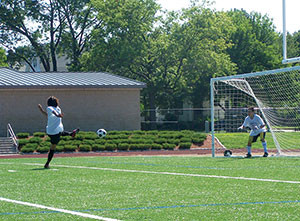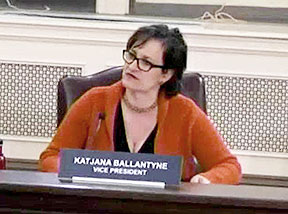By Sal Ghamo

The pros and cons of natural versus artificial turf are still being debated and assessed by the city, according to a report by the Board of Aldermen’s Special Committee on Open Space, Environment, and Energy.
At the March 10 regular meeting of the Board of Aldermen, a report was given on the activities of the Special Committee on Open Space, Environment, and Energy that had met earlier, on February 29.
According to the report, there were a significant amount of outside visitors at the meeting on February 29, which involved discussion about the gathering of information concerning synthetic turf and natural grass. The discussion was fueled by the community’s involvement in athletic field selections.
Katjana Ballantyne, Board Vice President and Chair of the Special Committee, reported on the meeting stating, “I have requested that the proponents of grass, and the proponents of synthetic turf be discussed. I suggest experts on each side of the issue come before the committee and share their subject matter expertise.” The meeting did not facilitate a debate, but instead helped the committee members to become more acquainted with the issue at hand.

Special Committee Chair Katjana Ballantyne reported to the Board the findings of the latest committee meeting.
Experts on each side of the athletic field issue shared their knowledge concerning the pros and cons of natural grass versus synthetic turf. David Nardun, from Stantec, was selected to share information about synthetic turf. The share back of information ranged from synthetic turf material construction, drainage properties, padding fiber materials, info materials, warrantees dependent on maintenance plans, and temperature was also discussed due to the concern that if the temperature outside is 95 degrees then the field temperature could be as high as 135 degrees.
There was also discussion about natural infill versus synthetic infill. If there is to be natural infill then the field would require watering. Mr. Nardun also stated that maintenance is required for synthetic turf. The committee members expressed concern about abrasions caused by falling on turf, as well as surface temperature, drainage, and health issues associated with infill made from rubber tires.
Derrick Minik, from the Natural Grass Advisory Group and Grass Innovation Inc., was selected by the natural grass field proponents to give a report. Minik’s share back of information ranged from field aeration, field maintenance training, rest period, fertilizer consumption, reuse of field cloth coverages from 7,500 dollars to 10,000 dollars, and recommendations of maximum field usage.
Committee members also expressed skepticism regarding the amount of hours grass fields are used. Minik was asked if he’d be able to present the committee with examples of highly efficient grass fields in the northeast. Although Minik indicated that he could not, he did say that his company worked for grass sporting fields in the Ukraine.
Andrea Ranger, who is on the Commission of Energy Use and Climate Change, appeared before the committee to talk about the city’s commission and their concern with global warming. The range of topics discussed included solar systems, home weatherization, examination of municipal buildings and municipal operations, electricity load irrigation, green energy, the launch of the Somerville Energy Efficiency Now (SEEN), and how the commission is also working with the Mass Clean Energy Center as well.
Further study and discussion of the issue will continue until a final decision is made on the matter.















Reader Comments